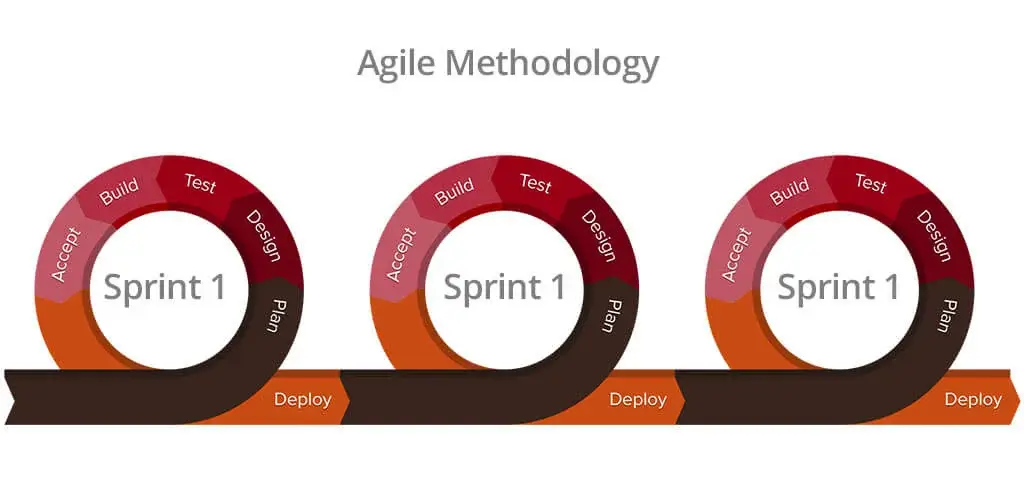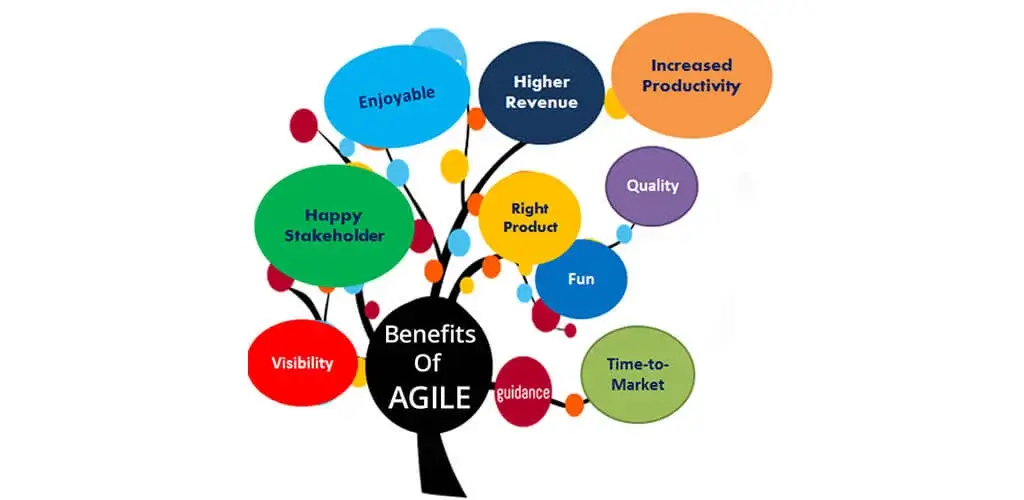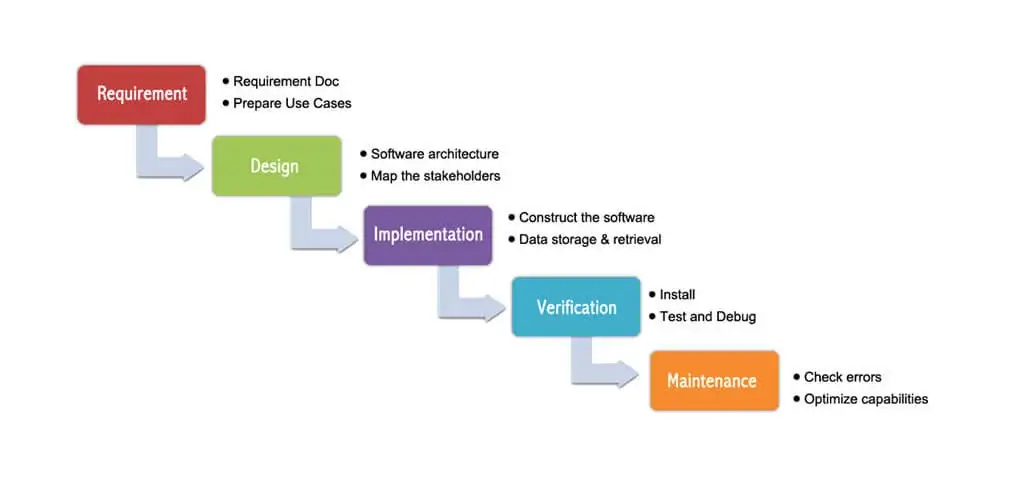Limited Time Offer: Full Feature Access. Plans start @$13 for 11 users Get Started Now
Limited Time Offer: Full Feature Access. Plans start @$13 for 11 users Get Started Now
Getting your team organized around a project is often easier said than done. Fortunately, following a project management methodology can help you organize your project into a structured, streamlined process. It makes team collaboration more efficient and projects become better organized.
Project management experts agree that most projects benefit when a recognized methodology is followed. While there are dozens of project management methods available, the majority of projects can be managed efficiently by following some popular project management methodologies below.

Agile project management is an approach based on delivering requirements iteratively and incrementally throughout the project life cycle. At the core of agile is the requirement to exhibit central values and behaviors of trust, flexibility, empowerment and collaboration.
Concept - Projects are envisioned and prioritized
Inception - Team members are identified, funding is put in place, and initial environments and requirements are discussed
Iteration/Construction - The development team works to deliver working software based on iteration requirements and feedback
Release - 2QA (Quality Assurance) testing, internal and external training, documentation development, and final release of the iteration into production
Production - Ongoing support of the software
Retirement - End-of-life activities, including customer notification and migration
This view presents the full Agile lifecycle model within the enterprise. In any enterprise there may be projects operating simultaneously, multiple sprints/iterations being logged on different product lines, and a variety of customers, both external and internal, with a range of business needs.

Agile approaches empower those involved; build accountability; encourage diversity of ideas; allowing the early release of benefits; and promotion of continuous improvement.
Agile helps build client and user engagement because changes are incremental and evolutionary rather than revolutionary: it can therefore be effective in supporting cultural change that is critical to the success of most transformation projects.
Agile allows decision 'gremlins' to be tested and rejected early: the tight feedback loops provide benefits in agile that are not as evident in waterfall.

Agile project management has its disadvantages such as less easy identification of project risks and poor management of resources.
A flexible system like Agile can make it difficult to focus and push your projects to completion if you're not careful. There's less set in stone, and no process to make sure the project is continuing smoothly, making it easy for projects to lose direction.
Scrum project management is a methodology for managing software delivery that comes under the broader umbrella of agile project management. It provides a lightweight process framework that embraces iterative and incremental practices,
helping organizations deliver working software more frequently. Projects progress via a series of iterations called sprints; at the end of each sprint the team produces a potentially deliverable product increment.

Backlog Refinement Meeting (also called "Backlog Grooming"): This meeting is much like the planning phase of TPM, and is held on day one of each sprint—you'll look over the tasks left in the project, things left behind from previous sprints, and will decide what to focus on. The PO makes the call on how to prioritize tasks, and this ultimately determines how efficient the sprints are.
Sprint Planning Meeting: Once the PO decides what to focus on, this meeting helps the team understand what they'll be building and why. You could share "user stories," describing features from the customer's point of view, or could simply divide tasks for each team to work on during the sprint.
Daily Scrum Meetings: Simple daily meetings that should only last about 15 minutes, Scrum meetings are a way for team members to update each other on progress. This meeting is not the time or place to air issues—those will go to the Scrum master outside of the daily meetings—but instead is a place to keep the ball rolling.
Sprint Review: Since a potentially shippable item is expected at the end of each sprint, the Scrum framework naturally places an emphasis on review. Team members will present what they've completed to all stakeholders. While this meeting pushes accountability, its goal is to make sure that the sprint's completed items match up with business and user goals.
Sprint Retrospective: Held immediately after the sprint review meeting, the Sprint retrospective is full of collaborative feedback. Looking at successes and hold ups, everyone decides what is working (what they should continue doing) and what isn't working (what they should stop doing). This should inspire the focus of the next sprint.
Scrum can help teams complete project deliverables quickly and efficiently:
Waterfall project management is a sequential, linear process of project management. It consists of several discrete phases. No phase begins until the prior phase is complete, and each phase’s completion is terminal—waterfall management does not allow you to return to a previous phase. The only way to revisit a phase is to start over at phase one.

Extensive documentation:- Because you can’t go back to a previous activity, you’re forced to create a comprehensive documentation from the start, listing all the requirements you can think of.
Knowledge stays in the organization:- When you have extensive documentation, knowledge won’t get lost if someone leaves. Also, you don’t have to spend time on training new members as they can familiarize with the project by reading the documentation.
Team members can better plan their time:- Because everyone knows in advance on what they’ll work, they can be assigned on multiple projects at the same time.
Easy to understand:- Waterfall projects are divided in discrete and easily understandable phases. As a result, project management is straightforward and the process is easily understandable even to non-developers.
Client knows what to expect:- Clients can know in advance the cost and timeline of the project so they can plan their business activities and manage cash flow according to the plan.
Client input not required:- After requirements phase, client input is minimal (save for occasional reviews, approvals, and status meetings). This means you don’t have coordinate with them and wait for when they’re available.
Easier to measure:- Because waterfall projects are simple, it’s much easier to measure your progress by quickly looking at a Gantt chart.
Better design:- Products have a higher cohesion because during the design phase you know everything that must be taken into account. There is no one-feature-at-a-time problem that leads to usability problems down the road.
No going back:- Once you’re finished with one activity, it’s difficult and expensive to go back and make changes. This puts a huge pressure on the planning.
No room for error during requirements phase:- Everything relies heavily on the requirements phase and if you make an error, the project is doomed.
Deadline creep:- Once one activity is late, all the other activities are late too, including the project deadline.
QA too late to be useful:- Testing is done at the end of the project which means that developers can’t improve how they write code based on QA feedback.
Bug ridden software:- Because the testing is done at the end, most teams tend to rush the testing in order to deliver the project on time and hit their incentives. This short-term wins lead to sub-par quality and long-term problems.
Not what the client actually needs:- Most of the time, clients can’t articulate what they need until they see what they don’t need. If the client realizes they need more than they initially thought, the project plan will need a major overhaul (as well as the budget).
Unexpected problems:- Designers can’t foresee all the problems that will arise from their design, and once those problems surface, it’s very difficult to fix them.